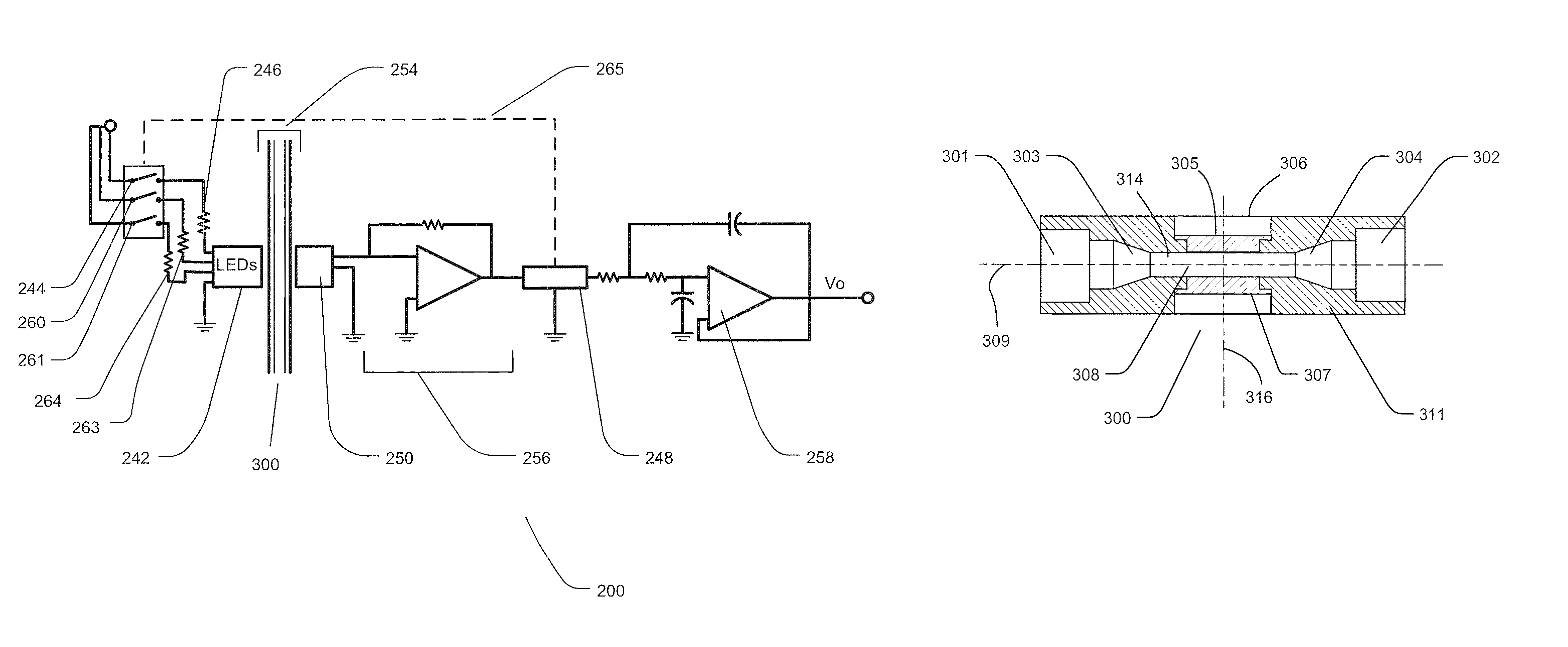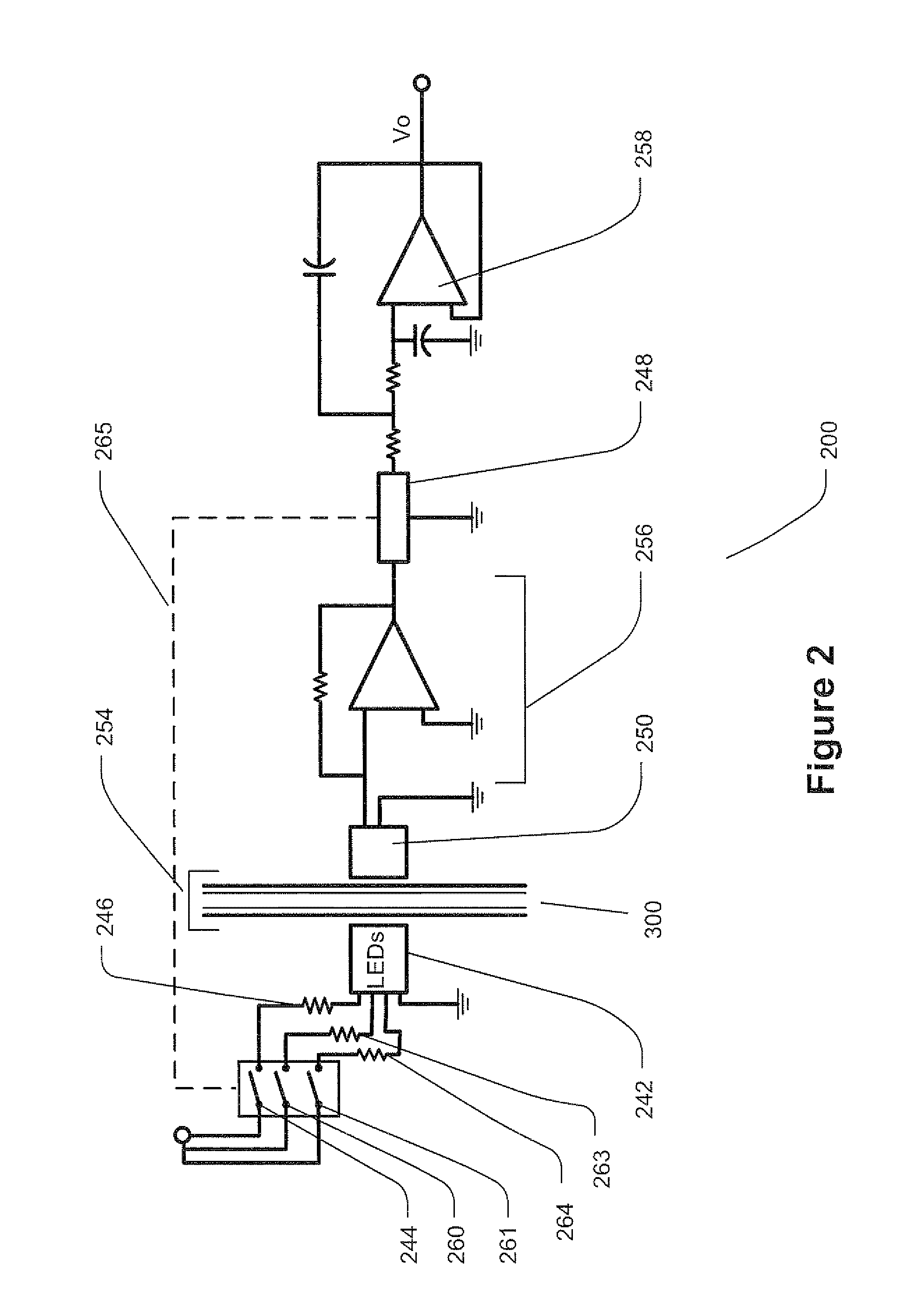Cuvette apparatus and system for measuring optical properties of a liquid such as blood
a technology of optical properties and cuvettes, which is applied in the field of cuvette apparatus and system for measuring the concentration value of constituents present in liquids, can solve the problems of abnormal decrease in patient's blood pressure, lack of fluid removal ability, hypovolemic shock, etc., and achieve accurate measurements of absorption and transmittance in blood.
- Summary
- Abstract
- Description
- Claims
- Application Information
AI Technical Summary
Benefits of technology
Problems solved by technology
Method used
Image
Examples
Embodiment Construction
[0033]A cuvette body has been developed which may be incorporated in an extracorporeal blood circuit system to measure particular concentrations of substances within blood. The cuvette is not limited to this particular application. The disclosed cuvette body includes a conduit for blood while facilitating measurement of specific blood properties.
[0034]FIG. 1a is a diagram showing the absorption of light through an optical filter e.g., a blood passage and includes other processes that decrease surface reflectance and light scattering that can interfere with the measurement of blood properties.
[0035]The Beer-Lambert law (also called the Beer-Lambert-Bouguer law or simply Beer's law) is a linear relationship between absorbance and the concentration of an absorber of electromagnetic radiation. The general Beer-Lambert law is usually written as:
A=aλ×b×c
where A is the measured absorbance, a λ is a wavelength-dependent absorptivity or extinction coefficient, b 104 is the path length, and ...
PUM
| Property | Measurement | Unit |
|---|---|---|
| wavelength | aaaaa | aaaaa |
| of wavelength | aaaaa | aaaaa |
| of wavelength | aaaaa | aaaaa |
Abstract
Description
Claims
Application Information
 Login to View More
Login to View More - R&D
- Intellectual Property
- Life Sciences
- Materials
- Tech Scout
- Unparalleled Data Quality
- Higher Quality Content
- 60% Fewer Hallucinations
Browse by: Latest US Patents, China's latest patents, Technical Efficacy Thesaurus, Application Domain, Technology Topic, Popular Technical Reports.
© 2025 PatSnap. All rights reserved.Legal|Privacy policy|Modern Slavery Act Transparency Statement|Sitemap|About US| Contact US: help@patsnap.com



